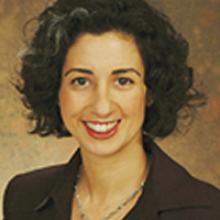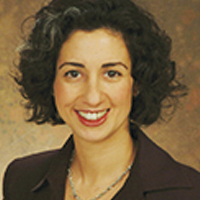User login
HOUSTON—Sudden unexpected death in epilepsy (SUDEP) in children is rare, but can it be avoided? The majority of pediatric SUDEP cases may occur in children with global developmental delay, early-onset epilepsy, or with seizures requiring polytherapy, according to research presented at the 70th Annual Meeting of the American Epilepsy Society.
“Every death of a person with epilepsy is devastating, the death of a child even more so. If we can understand who is at higher risk of SUDEP, then our clinical and basic science researchers can work to find preventative techniques, and hopefully we can apply those techniques to patients who are most at risk,” said Elizabeth Donner, MD, Director of the Comprehensive Epilepsy Program at the Hospital for Sick Children and Associate Professor of Pediatrics at the University of Toronto.
The incidence of SUDEP in children is estimated to be 0.43 per 1,000 patient years of epilepsy, more than 10 times the rate of sudden death in children overall. Since the numbers are relatively low, it has been debatable whether doctors should discuss SUDEP with their patients. Recent studies, however, suggest that SUDEP may be more common and potentially avoidable. To determine potential risk factors for pediatric SUDEP, Dr. Donner and her colleagues developed a national, multicenter prospective population registry for SUDEP.
Researchers collected data from the Canadian Pediatric Epilepsy Network, the Canadian Pediatric Surveillance Program, and the Ontario Forensic Pathology Service. They reviewed demographics, clinical features, circumstances surrounding death, and autopsy findings.
Researchers sought to include children with epilepsy with an unexpected death between January 1, 2014, and December 31, 2015. Inclusion criteria were age 18 or younger at death; a history of two or more seizures; and death that was sudden, unexpected, and occurred during normal circumstances. Autopsies, when available, determined that there was no anatomical or toxicological cause of death. Investigators excluded deaths due to trauma and drowning and status epilepticus.
The majority of deaths occurred in children between the ages of 5 and 10, and 52% were boys. In addition, all children had seizure onset before age 5, and median age of seizure onset was about 6 months. Seven of the children had genetic abnormalities. One child was seizure-free for 12 months and was not being treated with antiepileptic medications.
The investigators identified 21 cases of definite, probable, or possible pediatric SUDEP: 10 cases of definite SUDEP, two cases of definite SUDEP plus, six cases of probable SUDEP, and three cases of possible SUDEP (ie, an autopsy was not performed). Additionally, 10 of 12 children were having tonic clonic seizures six months prior to death. Researchers also found that in 10 of 17 cases, the parents reported that their child had a recent infection. Nearly all of the deaths occurred during sleep and were unwitnessed.
“It may be worth looking at whether infection in children with epilepsy changes their risk of sudden death,” said Dr. Donner. “We really have a lot more work to do with this limited number of cases, and we are still identifying more cases and working to better understand the data.”
—Erica Tricarico
Suggested Reading
Donner EJ, Waddell B, Osland K, et al. After sudden unexpected death in epilepsy: Lessons learned and the road forward. Epilepsia. 2016;57(Suppl 1):46-53.
HOUSTON—Sudden unexpected death in epilepsy (SUDEP) in children is rare, but can it be avoided? The majority of pediatric SUDEP cases may occur in children with global developmental delay, early-onset epilepsy, or with seizures requiring polytherapy, according to research presented at the 70th Annual Meeting of the American Epilepsy Society.
“Every death of a person with epilepsy is devastating, the death of a child even more so. If we can understand who is at higher risk of SUDEP, then our clinical and basic science researchers can work to find preventative techniques, and hopefully we can apply those techniques to patients who are most at risk,” said Elizabeth Donner, MD, Director of the Comprehensive Epilepsy Program at the Hospital for Sick Children and Associate Professor of Pediatrics at the University of Toronto.
The incidence of SUDEP in children is estimated to be 0.43 per 1,000 patient years of epilepsy, more than 10 times the rate of sudden death in children overall. Since the numbers are relatively low, it has been debatable whether doctors should discuss SUDEP with their patients. Recent studies, however, suggest that SUDEP may be more common and potentially avoidable. To determine potential risk factors for pediatric SUDEP, Dr. Donner and her colleagues developed a national, multicenter prospective population registry for SUDEP.
Researchers collected data from the Canadian Pediatric Epilepsy Network, the Canadian Pediatric Surveillance Program, and the Ontario Forensic Pathology Service. They reviewed demographics, clinical features, circumstances surrounding death, and autopsy findings.
Researchers sought to include children with epilepsy with an unexpected death between January 1, 2014, and December 31, 2015. Inclusion criteria were age 18 or younger at death; a history of two or more seizures; and death that was sudden, unexpected, and occurred during normal circumstances. Autopsies, when available, determined that there was no anatomical or toxicological cause of death. Investigators excluded deaths due to trauma and drowning and status epilepticus.
The majority of deaths occurred in children between the ages of 5 and 10, and 52% were boys. In addition, all children had seizure onset before age 5, and median age of seizure onset was about 6 months. Seven of the children had genetic abnormalities. One child was seizure-free for 12 months and was not being treated with antiepileptic medications.
The investigators identified 21 cases of definite, probable, or possible pediatric SUDEP: 10 cases of definite SUDEP, two cases of definite SUDEP plus, six cases of probable SUDEP, and three cases of possible SUDEP (ie, an autopsy was not performed). Additionally, 10 of 12 children were having tonic clonic seizures six months prior to death. Researchers also found that in 10 of 17 cases, the parents reported that their child had a recent infection. Nearly all of the deaths occurred during sleep and were unwitnessed.
“It may be worth looking at whether infection in children with epilepsy changes their risk of sudden death,” said Dr. Donner. “We really have a lot more work to do with this limited number of cases, and we are still identifying more cases and working to better understand the data.”
—Erica Tricarico
Suggested Reading
Donner EJ, Waddell B, Osland K, et al. After sudden unexpected death in epilepsy: Lessons learned and the road forward. Epilepsia. 2016;57(Suppl 1):46-53.
HOUSTON—Sudden unexpected death in epilepsy (SUDEP) in children is rare, but can it be avoided? The majority of pediatric SUDEP cases may occur in children with global developmental delay, early-onset epilepsy, or with seizures requiring polytherapy, according to research presented at the 70th Annual Meeting of the American Epilepsy Society.
“Every death of a person with epilepsy is devastating, the death of a child even more so. If we can understand who is at higher risk of SUDEP, then our clinical and basic science researchers can work to find preventative techniques, and hopefully we can apply those techniques to patients who are most at risk,” said Elizabeth Donner, MD, Director of the Comprehensive Epilepsy Program at the Hospital for Sick Children and Associate Professor of Pediatrics at the University of Toronto.
The incidence of SUDEP in children is estimated to be 0.43 per 1,000 patient years of epilepsy, more than 10 times the rate of sudden death in children overall. Since the numbers are relatively low, it has been debatable whether doctors should discuss SUDEP with their patients. Recent studies, however, suggest that SUDEP may be more common and potentially avoidable. To determine potential risk factors for pediatric SUDEP, Dr. Donner and her colleagues developed a national, multicenter prospective population registry for SUDEP.
Researchers collected data from the Canadian Pediatric Epilepsy Network, the Canadian Pediatric Surveillance Program, and the Ontario Forensic Pathology Service. They reviewed demographics, clinical features, circumstances surrounding death, and autopsy findings.
Researchers sought to include children with epilepsy with an unexpected death between January 1, 2014, and December 31, 2015. Inclusion criteria were age 18 or younger at death; a history of two or more seizures; and death that was sudden, unexpected, and occurred during normal circumstances. Autopsies, when available, determined that there was no anatomical or toxicological cause of death. Investigators excluded deaths due to trauma and drowning and status epilepticus.
The majority of deaths occurred in children between the ages of 5 and 10, and 52% were boys. In addition, all children had seizure onset before age 5, and median age of seizure onset was about 6 months. Seven of the children had genetic abnormalities. One child was seizure-free for 12 months and was not being treated with antiepileptic medications.
The investigators identified 21 cases of definite, probable, or possible pediatric SUDEP: 10 cases of definite SUDEP, two cases of definite SUDEP plus, six cases of probable SUDEP, and three cases of possible SUDEP (ie, an autopsy was not performed). Additionally, 10 of 12 children were having tonic clonic seizures six months prior to death. Researchers also found that in 10 of 17 cases, the parents reported that their child had a recent infection. Nearly all of the deaths occurred during sleep and were unwitnessed.
“It may be worth looking at whether infection in children with epilepsy changes their risk of sudden death,” said Dr. Donner. “We really have a lot more work to do with this limited number of cases, and we are still identifying more cases and working to better understand the data.”
—Erica Tricarico
Suggested Reading
Donner EJ, Waddell B, Osland K, et al. After sudden unexpected death in epilepsy: Lessons learned and the road forward. Epilepsia. 2016;57(Suppl 1):46-53.

